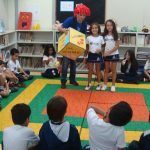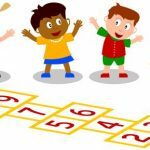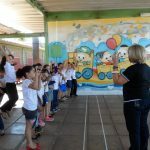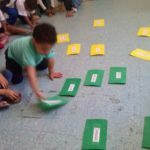See in this article suggestions for Somar games for Early Childhood Education. They are suggestions for fun activities to teach addiction to your students.
Learning to add is a challenge for children, but it can be made easier if the way the educator develops this operation is playful and fun.
There are several techniques used by teachers to make this knowledge happen in an easy and pleasurable way for children.

Goals:
• Learn to add;
• List quantity and symbol;
• Understand how to build a mathematical operation;
• Apply the sum to a real context.
• Age group: from 4 years old. Child education.
Early Childhood Education teacher Cynthia Akemi Teixeira, from the City of São Paulo, has several suggestions for activities to apply the sum in a playful way for her students, in addition, it introduces simple tasks into the children's routine, but it begins to instill this type of operation in the students' daily lives, as well as working the sum within a context.
For example, every day, the class collectively counts the number of boys and girls, recording on the blackboard. Then, it adds up to see how many students attended class that day.
For children who have not yet appropriated the numerals, scratches or drawings are used to add them up. Discover other activities developed by her:
Sum with gloves and fingers
By filling a pair of plastic gloves with any material of your choice, it is possible to have one hand, the main instrument for learning to add and count.
In this adding game, the teacher can work with data to work addition operations.
The dice must have the side with six balls covered with a tape.
The student must roll a dice and lift the corresponding number of fingers from one of the gloves.
Then do the same with the other die and glove. Finally, just count how many fingers were raised. This will be the sum of the numbers.
Sum with bottle caps
Bottle caps can also be the teacher's allies in building beads. Do a very large addition operation on a sheet of paper and, beside it, leave a space to place the caps corresponding to the numbers. Children must insert the caps according to the number requested and then join them all in the line that asks for the total. So she must count how many they have in total and put the corresponding number at the end of the sum.
playing with lego
Lego can be a great alternative for building an addition operation with students. The teacher can ask the students to pick up the number of pieces corresponding to the numbers and then concretely add up how much is left.
In this case, the teacher already works with the addition symbol (+) and also with the operation, making the children, from the beginning, get used to the symbologies of Mathematics.
Writing a number inside a circle, in the middle of a white sheet and several possible counts, which together give the highlighted number, is another way of working the addition.
Students will realize that several numbers, if added together, can give the same result. Lego pieces can be used to help them add more concretely, as in the example in the picture.
gathering fruits
The suggestion of the pedagogue Carmem Izabel, better known as the teacher Carminha, is this game that helps children to build the fundamental facts of addiction based on problem-situations.
Goals:
Associate quantity and symbol;
Understand the idea of addition as the action of adding one quantity to another;
Materials:
40 caps (10 yellow caps, 10 red, 10 green and 10 purple); the lids represent the fruits – orange, apple, pear, grapes;
4 plates or pots to put the lids that represent the fruits;
2 dice (preferably dice with numerals);
1 plate (birthday party) for each pair of students;
How to do it: Divide the class into pairs. Distribute a small plate to each pair. The caps (fruits) are on plates in the center where the game will be held. Each pair, in turn, rolls the dice and removes from the center plates the amount of caps equivalent to two types of fruit and puts it in their little plate. The pairs that add the fruits and obtain the greatest amount are considered the winners of each round.
Source: https://atividadesparaprofessores.com.br/jogos-de-somar-para-educacao-infantil/
Did you like it? Share this post on your social network
 PLAY TO SOOTH THE CHILDREN
PLAY TO SOOTH THE CHILDREN
 RECREATIONAL ACTIVITIES FOR EARLY CHILDHOOD EDUCATION
RECREATIONAL ACTIVITIES FOR EARLY CHILDHOOD EDUCATION
 FOLK PLAY FOR EARLY CHILDHOOD EDUCATION
FOLK PLAY FOR EARLY CHILDHOOD EDUCATION
 GROUP DYNAMICS FOR TEACHERS
GROUP DYNAMICS FOR TEACHERS
 MAGIC WORDS FOR EARLY CHILDHOOD EDUCATION
MAGIC WORDS FOR EARLY CHILDHOOD EDUCATION
 Playful Plays With Own Names
Playful Plays With Own Names
This site uses Akismet to reduce spam. Learn how your comment data is processed.